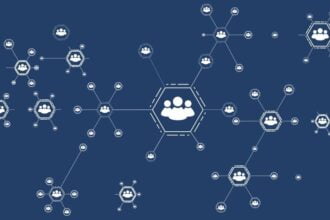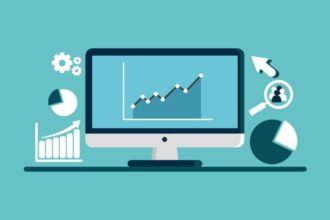Data science in 2021 allows business owners to process massive amounts of information and obtain the valuable nuggets that once took days to compute. With data modeling, you can take a complex software process and create a diagram that is much easier to understand.
If your business deals with big data at all, then data modeling is a concept you may already know. You can use tools for data modeling to create an overall IT strategy for your business or in the task of developing new databases.
Benefits of Data Modelling
Many advantages come with data modeling, such as:
- Integrate data from different systems that may not communicate well with one another.
- Use free data modeling tools for organizing big data so that information is easier to access.
- Understand your business by seeking out graphic representations of complex concepts.
If you have a lot of different information, you’ll most certainly utilize data modeling at some point in your operations. Fortunately, many tools make data modeling more effortless than ever before.
While there are a lot of great business intelligence tools out there, it can be difficult to use them effectively. This is why services like Power BI Consulting can be so invaluable. They can help you figure out the tools and navigate their functionality.
We’ve sorted through the different ones currently available and come up with what we feel are the top 10.
1. RapidMiner
RapidMiner offers several features that make it stand out as one of the top data modeling software options, and about 40,000 organizations around the world currently use it. Some of the features include the ability to build machine learning models and turn data modeling into prescriptive actions.
For those who haven’t used data modeling tools before, the process is simplified with pre-set case templates and tutorials to walk through. For data scientists, you’ll find the software integrates with custom Python and R code and offers 1,500 native algorithms and functions.
2. MapBusinessOnline
One data modeling tool that you might not have considered is mapping. However, creating a map of sales or competitor territories gives you information that helps your business grow. You can even create sales territory maps to reduce fuel costs and improve the productivity of your sales agents. Discover new markets that remain untapped in your industry.
3. Vertabelo
If you’re looking for a robust database design modeling tool, Vertabelo is an excellent choice. Instead of manually creating tables in a database, you can use visual modeling. The software also works on a reverse engineering model. If you already have a database, the tool allows you to tweak the organization of elements you’ve already built.
4. Lucidchart
Lucidchart allows you to create database diagrams with a collaborative online tool. Because this data modeling solution is cloud-based, there’s no need to download bulky software, and updates are instantaneous. One of the main benefits of this tool is that you can save hours of manual work. The database schema design tool works with platforms such as MySQL, Oracle, SQL Server and PostgreSQL.
5. SQL Database Modeler
This software allows you to participate in both reverse engineering and forward engineering. Take databases already in existence and perfect them. Then, use forward engineering to see how they can best grow over time. The more unique features of this platform include the ability to create multiple subject areas and an extremely user-friendly UI. Some of the companies using this tool include Ford, Lenovo, Wayfair and Deloitte.
6. erwin Data Modeler
erwin DM is known for being an inexpensive but powerful solution for businesses and complies with governance database rules. It is one of the top data modeling tools in existence. Some of erwin’s features include cloud-based data solution, automated schema generation and the ability to build hybrid architectures. Several versions of the software are available, including a standard edition. The one you need depends on the size of your data and your needs as an organization.
7. Toad Data Modeler
Toad has a focus on automation and increasing productivity for the user. Key abilities of the software include instant analysis and the ability to export to tools such as Excel. Plus, it compares and syncs your data across different servers. With this tool, you can easily automate repetitive tasks to save time and increase your performance. It also offers both reverse and forward engineering of databases.
This software offers a free trial for a full 30 days, so you can see if it is up to the tasks you’d like it to perform.
8. DbSchema
If you’re looking for a tool that works both with SQL and non-SQL databases, DbSchema is an excellent choice. Some of the interesting benefits of this database modeling tool include interactive layouts, the ability to synchronize schema, deploying data from multiple tables and design schema without connecting to a database.
You can easily upload data from an Excel file, for example, giving you a broader range of opportunities for importing older data tables that might not be in the cloud. The tool boasts the ability to integrate everything you need to manage your databases without needing to purchase additional software.
9. HeidiSQL
If you’re on a tight budget and looking for a free data modeling tool, HeidiSQL is an excellent choice. Even though the software is free to use, it’s chock full of features, such as the ability to connect with multiple servers in a single window, import text files and bulk edit tables. Heidi connects with database systems such as MySQL, Microsoft SQL, PostgreSQL and MariaDB.
10. Apache Spark
If you have large databases and need to find logical data modeling tools for multiple tasks, Apache Spark is a good choice for your needs. Build parallel apps via the high-level operators built into the platform. Some of the benefits of this Open Source option include using a cluster and running about 100 times faster than other solutions. Apache integrates with Hadoop data, and it also works with libraries such as MLib, GraphX and Spark Streaming.
The Future of Data Modeling Tools
No matter what tools for data modeling you choose for your business, seek out the features you’re most likely to use now and in the future. You may not need a system with all the bells and whistles.
Try some of the different platforms and figure out what meets your needs and improves your productivity.











